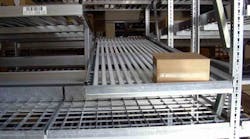Manufacturing businesses prioritizes processes, optimizing them to achieve specific outcomes, and even developing strategies to arrive at desired results. Managing inventory is no less of a process than material selection or machine set-up. It’s critical to understand the principles of inventorying — the P’s and Q’s. From there, it’s possible to develop the right strategies for the business and incorporate that strategy into the business practices.
Long ago, when a bartender asked his patrons to “mind their P’s and Q’s” it was a request to pay up their bar tabs, which detailed their consumption UOM (units of measure) in” pints and quarts.” To understand inventorying, let’s consider “price (or cost) and quantity”, which along with the warehouse and location in the warehouse are the essential data elements for successful inventory tracking, accounting, and utilization.
For a manufacturing enterprise (especially smaller operations, those with annual sales $7 million or less), does it make more sense to use a perpetual or a periodic inventory plan? In general, perpetual inventorying is much preferred, but depending on inventory levels and "unplanned" demand, periodic inventorying might be the best choice.
Let’s review the two reasons that a business has inventory, whether it’s raw materials, finished goods, or products in some in-between state.
1. Businesses have inventory to buffer unexpected variances in demand and supply. As the theory goes, the more unpredictable the demand, the higher should be the level of supply (inventory.)
2. Businesses have inventory (and plan inventory levels) to optimize the expected financial results for the enterprise, considering return on inventory investment, minimizing ordering costs, minimizing the probability of a “stock out.” and minimizing the probability of excess and obsolete inventory. The theory here is that unless you can immediately obtain needed items “just in time” and with no ordering costs, some level of inventory investment is necessary to facilitate revenue flow, etc.
Inventory Costing Methods — Let’s review how inventory is costed, and also the difference between accounting for cost and making sound financial decisions. There are a few different acceptable methods under Generally Accepted Accounting Principles (GAAP) for costing inventory, recognizing that GAAP focuses on historical cost of acquiring inventory. These include:
First In-First Out (FIFO). Under this method, the oldest cost by SKU is charged to cost of goods sold (COGS) as the items are sold or used in production.
Example: Let’s say a company purchases 50 units of inventory from a vendor at $100/each, and then later purchases another 50 units at $110/each, reflecting a vendor price increase. The value of the 100 units of inventory on hand would be $10,500 ($5,000 + $5,500). Then, if the company sells 60 units to a customer, the COGS and reduction of inventory value using the FIFO method would be $6,100 (50 units at $100 + 10units at $110) as it is assumed the oldest inventory would be sold first. The remaining 40 inventory units on hand would be valued at $110/each or $4,400 in total.
Last In-First Out (LIFO). Under this method, the newest cost by SKU is charged to cost of sales as the items are sold or used in production. Using the same assumptions as the above example, the inventory reduction and cost of sales recorded by the company for the sale of 60 units would be $6,500 (50 x $110 + 10 x $100) and the remaining 40 units on hand would be valued at $100/each or $4,000. This method is less commonly used, in part because it is discouraged by the IRS for tax reporting purposes and is not acceptable under international reporting standards (i.e. for companies or locations outside of the U.S.).
But note: Unless acquisition costs are changing rapidly, or you have a significant volume of items procured over time at dramatically different costs, the application of either the FIFO or LIFO method should not be that significantly different.
Specific Identification. This refers to not only the specific tracking of the item or part by serial number, lot number, etc., but also its cost. This method is most often used when individual products are not homogeneous or have a high dollar value and/or low rate of turnover. Because it is more complex to track individual items specifically, this method is generally not recommended for low-value, high-turnover items, as the cost of doing so is likely to outweigh the benefits.
Moving Average. This is the method I prefer as it provides the best view of historical cost by item or SKU in a way that is relevant and predictable. Under this method, a weighted average cost per unit is recalculated each time there is a purchase, by dividing the total cost of inventory purchased by the total number of units available for sale.
Going back to the above example, the average unit price after the company’s first purchase of 50 units (assuming there had been no previous purchases at different prices) would simply be $100 per unit. After the second purchase, the average unit cost would be $105 (($5000 + $5,500) / 100 units). Then, when the business sells 60 units to a customer, the total cost of sales and inventory reduction would be $6,300, leaving 40 units on hand at their average cost of $105, or $4,200 in total.
Although the Moving Average method requires frequent recalculations as inventory is purchased, most accounting systems have the ability to calculate the Moving Average cost automatically, if this method is selected during setup.
Recall that accounting is focused on the historical cost of inventory. However, from a price-setting standpoint, the most relevant cost is the current cost of replacement inventory (unless you are not going to replace the inventory.)
For example, if you have an item that you bought for $100/each and you sell them for $150 each, your income statement will show a gross profit of $50 for each unit sold. Now, if you find that the replacement cost of the item is $175 each and you need to replace the items, you can already see the problem: Even though the accounting reports indicate a profit, from an economic perspective you will begin losing $25/unit if you do not adjust your selling price.
It is essential for inventory managers to understand that the historical cost is just that, historical, and that the selling price of inventory is based on current market value, which can often have little to no relationship to historical cost. Events can (and do) raise or lower the market value of inventory.
Think this can’t happen in the real world? “Next In-First Out” costing (NIFO) explains why gas prices rise immediately when there is a probability of a supply increase but decline slowly in the opposite circumstance. Consider also the selling value of a cell phone when a new edition is introduced. The market value is likely to decline.
NIFO is not considered an acceptable method of inventory costing for external financial reporting. However, it can be useful for internal purposes during periods of high inflation, so that managers can see what profit levels should be when factoring in the effects of inflation. The job of an inventory manager is to guide the enterprise managers in making proper financial decisions — especially if the market value of a subset of inventory has declined to cost, or even below. I would rather sell “dead” inventory at a loss and redeploy the cash now than “wait it out” and scrap it for no cash. This is very similar to an “unrealized loss” on an investment, where the investor cannot realize that it may be better to sell at a small loss than to wait for a total loss.
In the next installment, I will address “Inventory Counting the Q (Quantity) Factor.”
Scott Palka is a partner and consulting CFO for Pro Back Office, a provider of skilled operational accounting, finance and strategic consulting talent, experience and expertise. He holds an MBA from the University of Denver’s Daniels School of Business and a B.S. with honors, from the University of Illinois. Contact him at LinkedIn.






